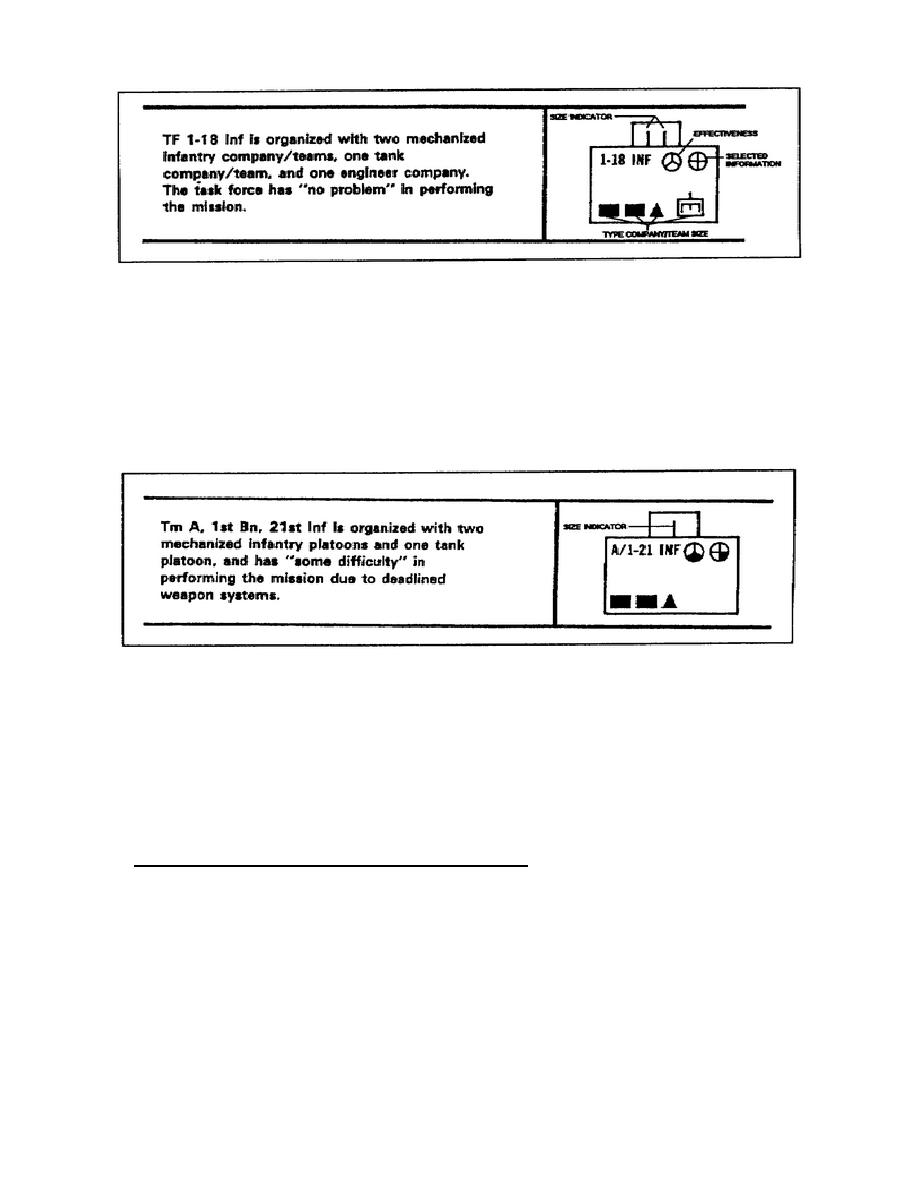
Figure 1-51.
Completed decision graphic
For example, the 1st Battalion, 21st Infantry has formed a company-size
team, team A. Team A consists of two mechanized infantry platoons, one
tank platoon, and has "some difficulty" performing its mission due to the
weapons systems (figure 1-52).
(For clarity and simplicity, the
composition of the team remains the same as above, except for the size of
the units.) The only change in the decision graphic is the unit size
indicator.
Figure 1-52.
Decision graphic, company-sized team
Special units (task forces or teams) consist of units one size smaller
than the special unit designation. For example, a battalion task force
has companies or company-sized teams, and a company-sized team has
platoon-sized elements.
When a task force has a division task force
designation, then brigade-size elements would make up the task force.
Figure 1-53 shows the basic operational symbol with different unit size
indicators. For a complete list of unit size indicators see FM 101-5-1.
4.
Preparation and Construction of Tables.
In your daily life, you constantly see the different types of tables.
Once again, the television serves as a prime example of the use of tables
to reinforce the spoken word.
Additionally, any books you read use
tables to arrange large quantities of data into a form that you can
quickly comprehend. Studies have
1-57
SS0530



 Previous Page
Previous Page
